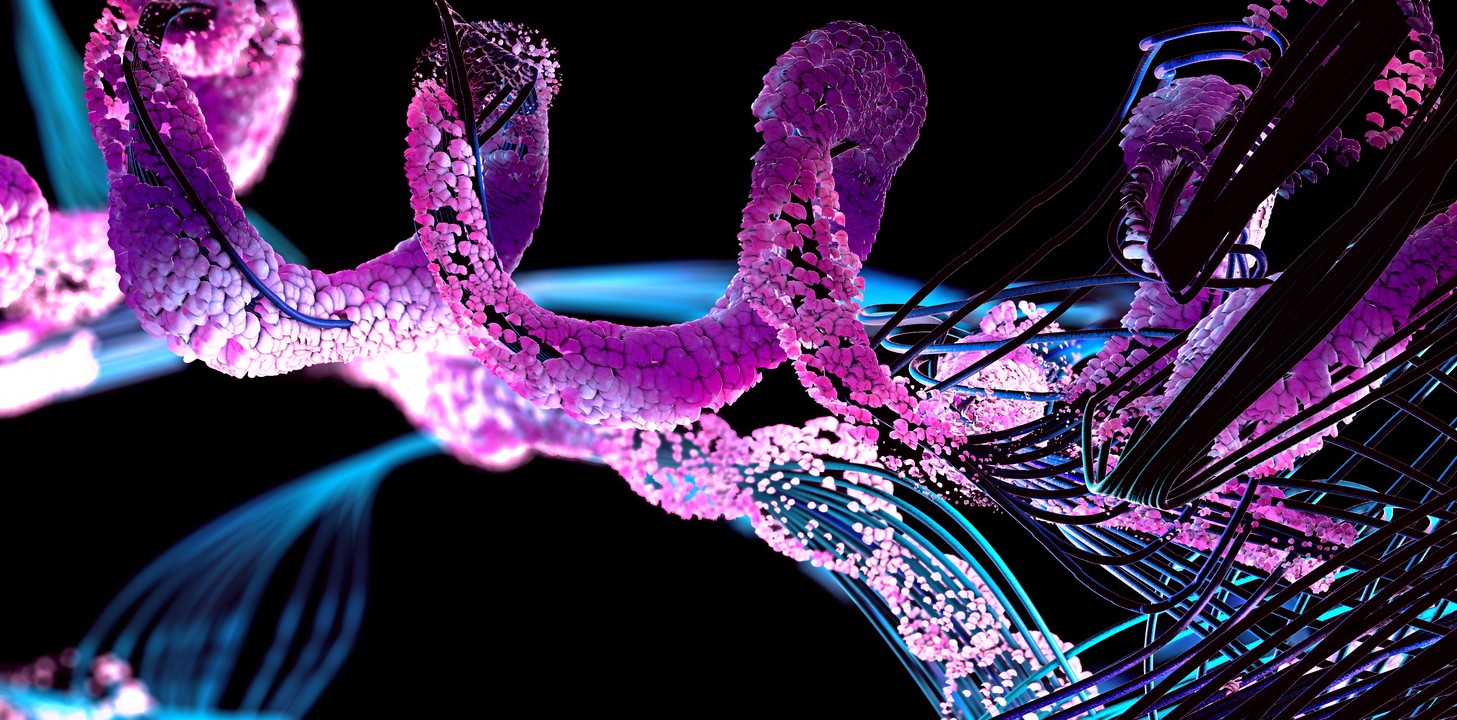The Difference Between CJC-1295 and CJC-1295 DAC
These two peptides seem similar but are not identical. CJC-1295 is a modified equivalent of the first 29 amino acids of GHRH, chemically identical to other growth hormone analogs like Sermorelin. Meanwhile, CJC-1295 DAC is created by adding the Drug Affinity Complex DAC, to CJC-1295.
DAC is added to CJC-1295 using the lysine linker. The DAC appears to protect CJC-1295 while it circulates in the bloodstream. DAC may ensure the increased half-life of CJC-1295 by allowing the peptide to bind to blood proteins such as Albumin.
The Functions of CJC-1295
CJC-1295 NO DAC appears to function to enhance protein synthesis. The peptide may achieve this by inhibiting the natural process of cellular degradation, thereby increasing protein synthesis. The peptide may also potentially improve lipolytic processes by increasing the rate of synthesis and disintegration. By increasing the lipolytic process, CJC-1295 NO DAC peptide may influence the increased efficiency of fat cell dissolution.
CJC-1295 and Hemorrhagic Shock and GHRH 1-29 Interaction
CJC-1295 NO DAC has been hypothesized to stimulate and improve nerve reflexes within the brain and may modulate blood flow, thereby preventing acute organ failure following hemorrhagic shock. On the other hand, hemorrhagic shock may be an acute condition followed by reduced tissue perfusion and insufficient nutrient and oxygen delivery necessary for cellular functions. Hemorrhagic shock is classified as cardiogenic, hypovolemic, septic, and neurogenic.
CJC-1295 NO DAC and Growth
The peptide is considered a potential enhancing agent for maintaining the normal rate of growth hormone release.[1] By doing this, the peptide may exert action in cases of abnormal growth in varieties of animal species. Maintaining the normal growth hormone level may be critical to releasing downstream hormones like insulin-like growth factor-2 (IGF-1). CJC-1295 appears to significantly enhance the synthesis of IGF-1. GH, CJC-1295, and IGF-1 collectively influence the pro-inflammatory mechanisms when activated.
In mouse models of GHRH knockout, the exposure to CJC-1295 appeared to reduce growth deficits. Furthermore, CJC-1295 appeared to steadily enhance the total body weight and length.[2] This study reports that “These findings [indicate that exposure to] CJC-1295 is able to maintain normal body composition and growth in GHRHKO mice.” The peptide also assessed the abnormal response to GRF following obesity.
CJC-1295 and Infertility
Scientists suggest GRF analogs, CJC-1295, might induce ovulation in infertile female species. Data findings imply that ovulation may be solely dependent on IGF-1 and may be regulated by the release and cycling of growth hormones. However, research in mouse models of superovulation suggest that the levels of IGF-1 and growth hormone may increase with ovulation.[3] These results posit that the exposure to a GH secretagogue like CJC-1295 may induce ovulation. Scientific research also suggests that CJC-1295 NO DAC and other GHRH analogs may impact male infertility by inducing sperm production. However, note that this hypothesis is still undergoing testing.[4] The researchers report that “these results led to the identification of CJC-1295 as a stable and active hGRF1-29 analogwith an extended plasma half-life.”
Disclaimer: The products mentioned are not intended for human or animal consumption. Research chemicals are intended solely for laboratory experimentation and/or in-vitro testing. Bodily introduction of any sort is strictly prohibited by law. All purchases are limited to licensed researchers and/or qualified professionals. All information shared in this article is for educational purposes only.
References
- Ionescu M, Frohman LA. Pulsatile secretion of growth hormone (GH) persists during continuous stimulation by CJC-1295, a long-acting GH-releasing hormone analog. J Clin Endocrinol Metab. 2006 Dec;91(12):4792-7. doi: 10.1210/jc.2006-1702. Epub 2006 Oct 3. PMID: 17018654.
- Alba M, Fintini D, Sagazio A, Lawrence B, Castaigne JP, Frohman LA, Salvatori R. Once-daily administration of CJC-1295, a long-acting growth hormone-releasing hormone (GHRH) analog, normalizes growth in the GHRH knockout mouse. Am J Physiol Endocrinol Metab. 2006 Dec;291(6):E1290-4. doi: 10.1152/ajpendo.00201.2006. Epub 2006 Jul 5. PMID: 16822960.
- Volpe A, Coukos G, Barreca A, Giordano G, Artini PG, Genazzani AR. Clinical use of growth hormone-releasing factor for induction of superovulation. Hum Reprod. 1991 Oct;6(9):1228-32. doi: 10.1093/oxfordjournals.humrep.a137517. PMID: 1752922.
- Jetté, Lucie, et al. “hGRF1-29-Albumin Bioconjugates Activate the GRF Receptor on the Anterior Pituitary in Rats: Identification of CJC-1295 as a Long Lasting GRF Analog.” (2005)
- Teichman SL, Neale A, Lawrence B, Gagnon C, Castaigne JP, Frohman LA. Prolonged stimulation of growth hormone (GH) and insulin-like growth factor I secretion by CJC-1295, a long-acting analog of GH-releasing hormone, in healthy adults. J Clin Endocrinol Metab. 2006 Mar;91(3):799-805. doi: 10.1210/jc.2005-1536. Epub 2005 Dec 13. PMID: 16352683.







